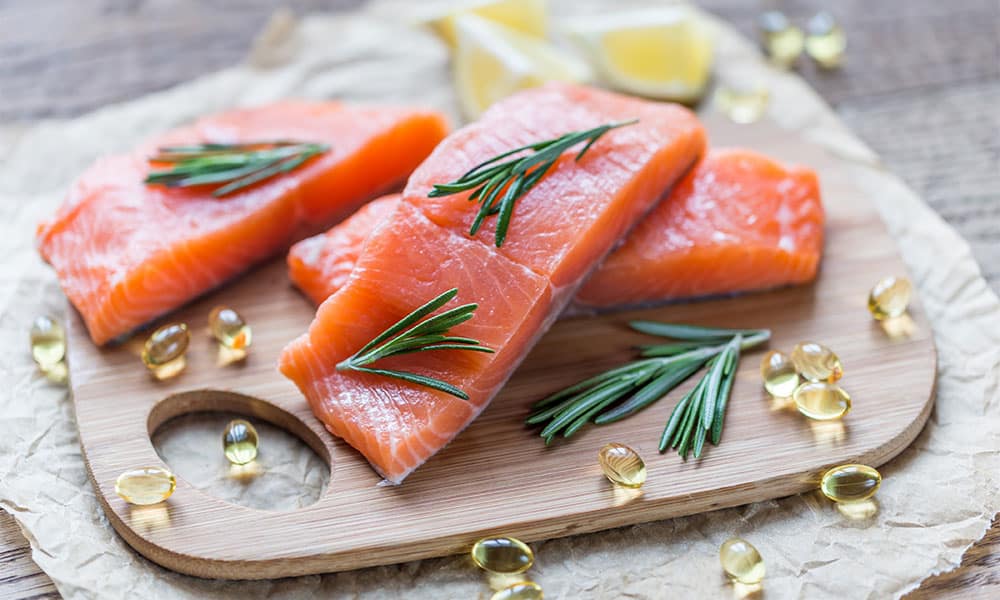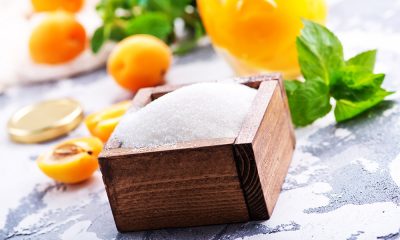Wellness
What is Omega-3? Why is it important?
Increasing omega-3 reduces inflammation, which is more important than ever since we now more so understand the role of chronic inflammation in both disease and aging.

Omega-3 is one of the four main fat groups that make up your body. Of these is omega-3 that we don’t get enough of.
Compared to other supplements, omega-3 isn’t just a building block, which alone is extremely important. Omega-3 has an even more important function in the body. It is needed to balance out the amount of omega-6.
Also, in relation to other supplements, without enough omega-3 your body will have a difficult time absorbing other supplements.
Omega-3 works in two ways:
- Omega-3 is a building block (especially DHA & EPA, two forms of omega-3)
- Omega-3 balances out omega-6 (omega-3:6 ratio)
1. Enough Omega-3, DHA, DPA and EPA is really important
Omega-3 is a building block to almost every cell in the body. It’s an important part of the cell membrane and increases its permeability. This improves nutrient uptake and removal of toxins.
DHA, DPA and EPA are fatty acids in the omega-3 family that are very difficult to get apart from fish. These are extremely important to brain health. A large number of neurological problems, including depression and anxiety, are often connected with low EPA levels.
2. Balancing your Omega-3:6 ratio is really, really important!
Increasing omega-3 reduces inflammation, which is more important than ever since we now more so understand the role of chronic inflammation in both disease and aging.
We have seen that high levels of omega-3 fats encourage the production of special pro-resolution molecules that not only stop inflammation, but also trigger the body to take action to solve the problem. Omega-3 not only helps stop the fire, but also helps put it out!
“Inflammation triggered by oxidative stress is the cause of much, perhaps even most, chronic human disease including human aging … This is especially relevant to the many pervasive chronic diseases that are still responsible for so much human suffering.”
-International Journal of Inflammation, 2011. Fredric J. Pashkow, John A. Burns School of Medicine, University of Hawai‘I
Chronic human disease includes:
ADHD, aging, allergies, eczema, Alzheimer’s, anxiety, arthritis, asthma, cancer, COPD, Crohn’s, chronic fatigue, cystic fibrosis, depression, diabetes, emphysema, fibromyalgia, heart disease, high blood pressure, hypertension, immune dysfunctions, Lyme, lupus, menstrual problems, multiple sclerosis, obesity, osteoporosis, Parkinson’s, premature aging, PTSD, rheumatoid arthritis, stroke, risk of death from all causes, and more.
Fish Oil as Omega-3 Supplementation
The primary drawback with fish oil is the problem with oxidation, which can occur at any point during the product’s life. Omega-3 fats are extremely fragile and are easily damaged by oxygen.
A recent study at the University of Auckland found that only 3 of 32 fish oil supplements contained quantities EPA and DHA that were equal or higher than labelled content. With 69% containing less than 67% of the stated value. Only 3 of 36 (4 not measured for EPA/DHA) met the recommended levels of oxidation markers. Meaning that 92% of the oils were oxidized above the international recommendations! (Albert, 2015)
Krill is being seen as a good alternative in that it contains high levels of the antioxidant astaxanthin, which keeps it safe from oxidative damage. In tests performed by Dr. Moerck, krill oil remained undamaged after being exposed to a steady flow of oxygen for 190 hours, compared to fish oil, which went rancid after just one hour. The problem with krill is that it contains very little omega-3, meaning that an extremely large amount would be required at a very high price ($300 USD or 6000 SEK / month), to fix the omega 3:6 imbalance in our bodies. Another problem with krill oil is that in tests using heat, it doesn’t perform as well.
Omega-3 / polyphenol combination
The best answer to a stable omega-3 fish oil is an omega-3 and polyphenol blend.
Omega-3:6 levels were tested in over 15000 individuals in Scandinavia, showing the average ratios of individuals who did not supplement omega-3, those that did, as well as those supplementing with an omega-3 / polyphenol blend.
Results:
| Trial Group | Individuals tested | Omega Balance |
| Group A. No omega-3 supplementation | 8396 | 12.4:1 |
| Group B. Daily omega-3 supplementation | 4107 | 6.7:1 |
| Group C. Daily omega-3 + polyphenol | 1172 | 2.5:1 |
This omega-3 and polyphenol blend is now distributed as Zinzino BalanceOil and is what we use ourselves.
Link to Zinzino BalanceOil*:
With fatty acid blood test: BalanceOil | BalanceOil AquaX
Without blood test: BalanceOil | BalanceOil AquaX
Zinzino BalanceOil AquaX is water soluble and costs $10/m more, but doesn’t have the same taste/texture of fish oil.
*Purchase through our link may result in us receiving a small commission.
Final word on the omega-3:6 balance and the importance of omega-3:
“Excessive amounts of omega-6 polyunsaturated fatty acids (PUFA) and a very high omega-6/omega-3 ratio, as is found in today’s Western diets, promote the pathogenesis of many diseases, including cardiovascular disease, cancer, and inflammatory and autoimmune diseases, whereas increased levels of omega-3 PUFA (a low omega-6/omega-3 ratio) exert suppressive effects. In the secondary prevention of cardiovascular disease, a ratio of 4/1 was associated with a 70% decrease in total mortality. A ratio of 2.5/1 reduced rectal cell proliferation in patients with colorectal cancer, whereas a ratio of 4/1 with the same amount of omega-3 PUFA had no effect. The lower omega-6/omega-3 ratio in women with breast cancer was associated with decreased risk. A ratio of 2–3/1 suppressed inflammation in patients with rheumatoid arthritis, and a ratio of 5/1 had a beneficial effect on patients with asthma, whereas a ratio of 10/1 had adverse consequences.”
– The importance of the ratio of omega-6/omega-3 essential fatty acids. Biomedicine & Pharmacotherapy. Simopoulos AP, The Center for Genetics, Nutrition and Health, Washington DC
Serhan CN, Chiang N, Van Dyke TE. Resolving inflammation: dual anti-inflammatory and pro-resolution lipid mediators. Nat Rev Immunol. 2008 May;8(5):349-61.
Schwab JM, Chiang N, Arita M, Serhan CN. Resolvin E1 and protectin D1 activate inflammation-resolution programmes. Nature. 2007 Jun 14;447(7146):869-74.
Bazan NG, Musto AE, Knott EJ. Endogenous signaling by omega-3 docosahexaenoic acid-derived mediators sustains homeostatic synaptic and circuitry integrity. Mol Neurobiol. 2011 Oct;44(2):216-22.

Wellness
Beneath the Layers

In the beginning of the journey of work clients and I venture on, the surface issues and discussions are initially “just surface.”
In fitness, when there’s a movement a client cannot perform after much practice and polishing, the first thought is that they just can’t do it. Soon enough, we discover their central nervous system has protected their body from moving in that specific manner, because there is a limiting belief and limiting decision their central nervous system and their unconscious mind have a greed upon. And it has defined itself as “safety.”
When clients want to lose weight, we later on discover the emotional un-resolve rooted in eating patterns inhibiting them from their success of doing so. Sometimes, more often than others, there’s systematic problems inhibiting digestion promoting bloating, infections wreaking havoc, and the list goes on.
Mental blocks become obvious as we begin to peel away the layers. We eventually become acquainted that the behavioral “issues” desired to be changed, are very obvious physical symptoms or manifestations breeding beneath deeper layers.
There’s a lot of “stuff” we stuff. That “stuff” will introduce itself to you and the world around you, eventually. Self preservation can feel “safe” and comfortable. But it is unsustainable. Eventually the totality of us, will beg to be resolved. Lean in listen and learn. Eventually you will heal.
“We will project that which is unconscious in the most obvious of ways in order to become consciously aware which is most unconscious so we can gain the learning necessary to get results.”- Nathan Rossi
-

 Wellness6 years ago
Wellness6 years agoHow to Talk to Your Kids About Sugar
-

 Wellness5 years ago
Wellness5 years agoBeneath the Layers
-

 Wellness7 years ago
Wellness7 years agoThe Sugar Story Children’s Book – Teaching Kids About Sugar
-

 Purpose5 years ago
Purpose5 years agoNever Let Technology Keep You from Your Dream!
-

 Wellness7 years ago
Wellness7 years ago5 Myths About Xylitol
-

 Lifestyle6 years ago
Lifestyle6 years agoOrganic, Sustainable, Non-Toxic Vacation Homes!
-

 Lifestyle6 years ago
Lifestyle6 years ago5 Ways to Make Your Next Hotel Stay Healthier
-

 Unrecipe7 years ago
Unrecipe7 years agoSuper Simple Apple Cake























